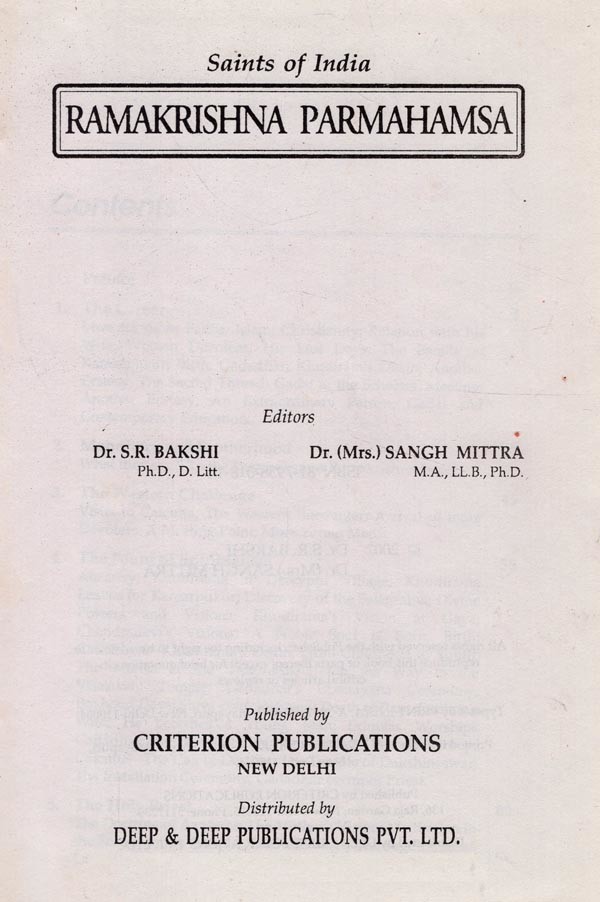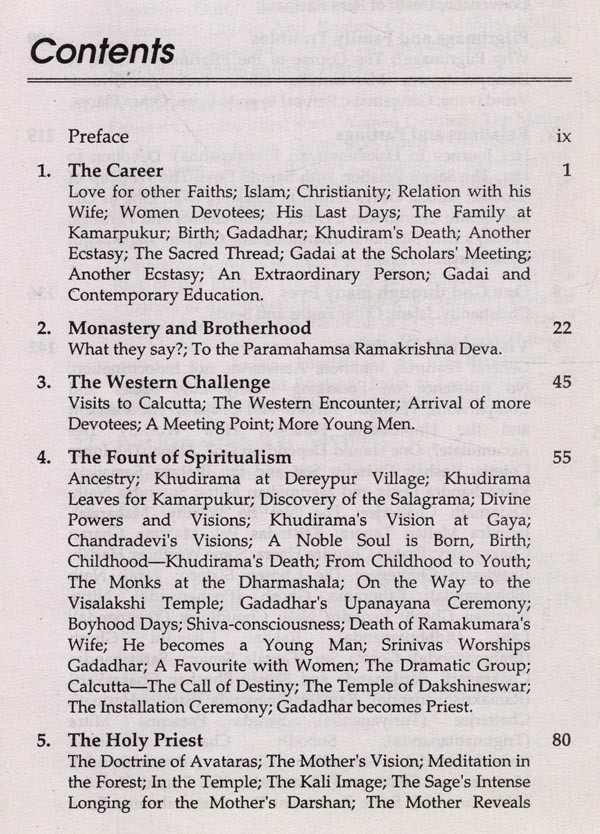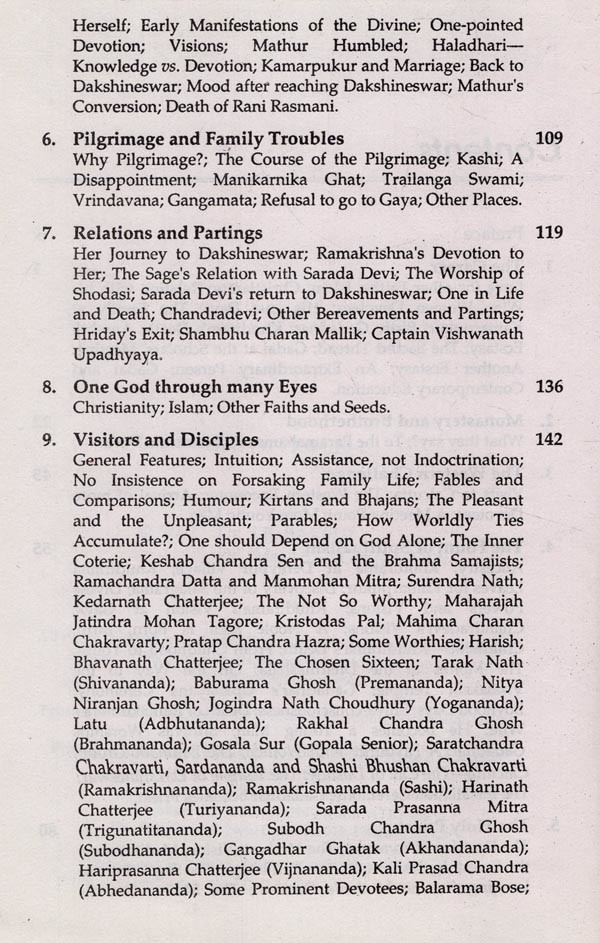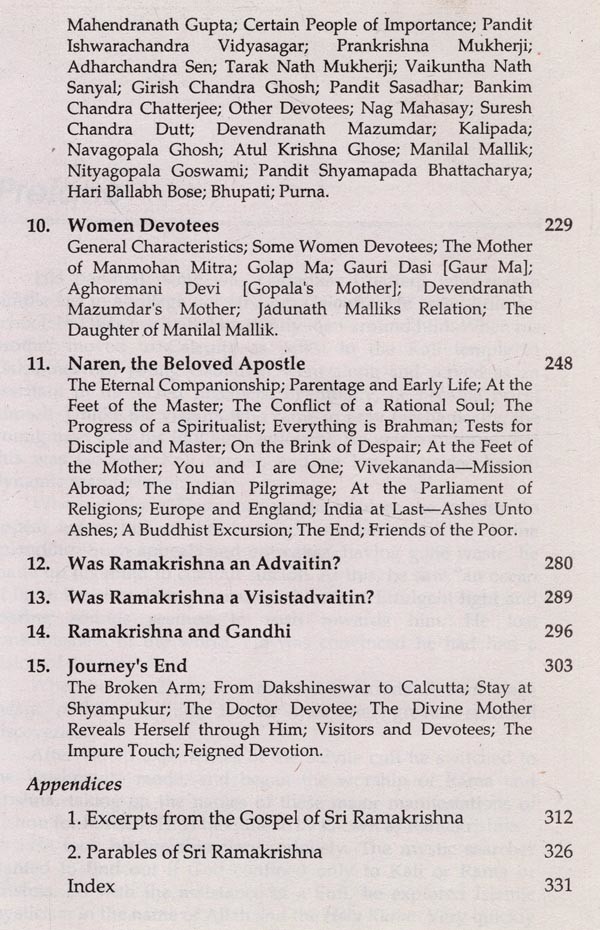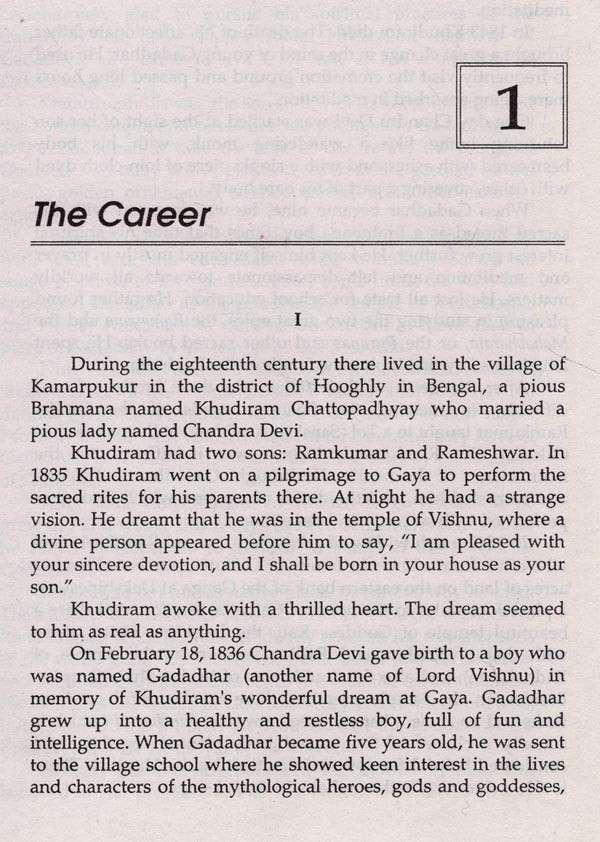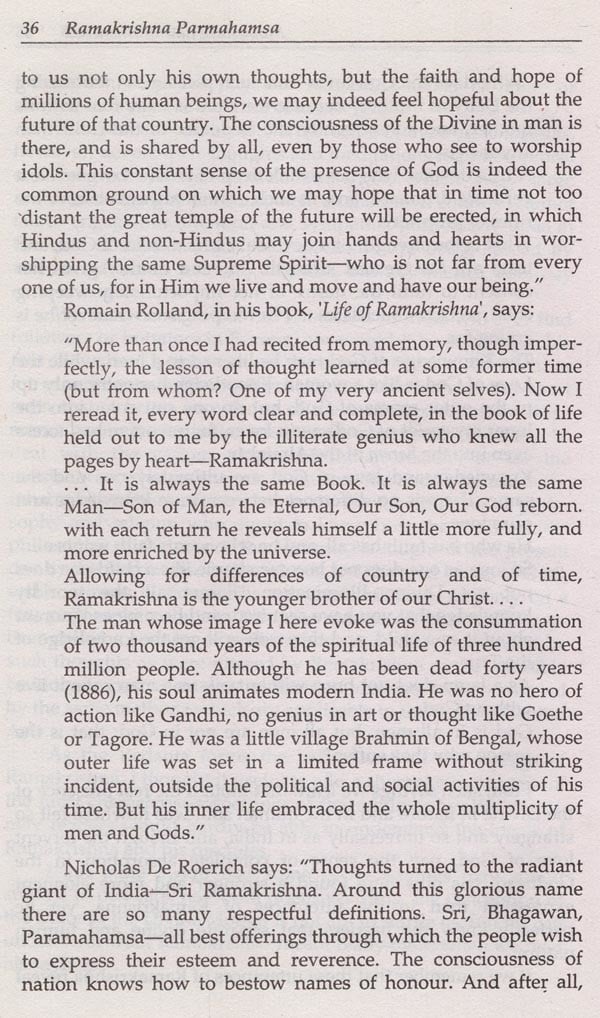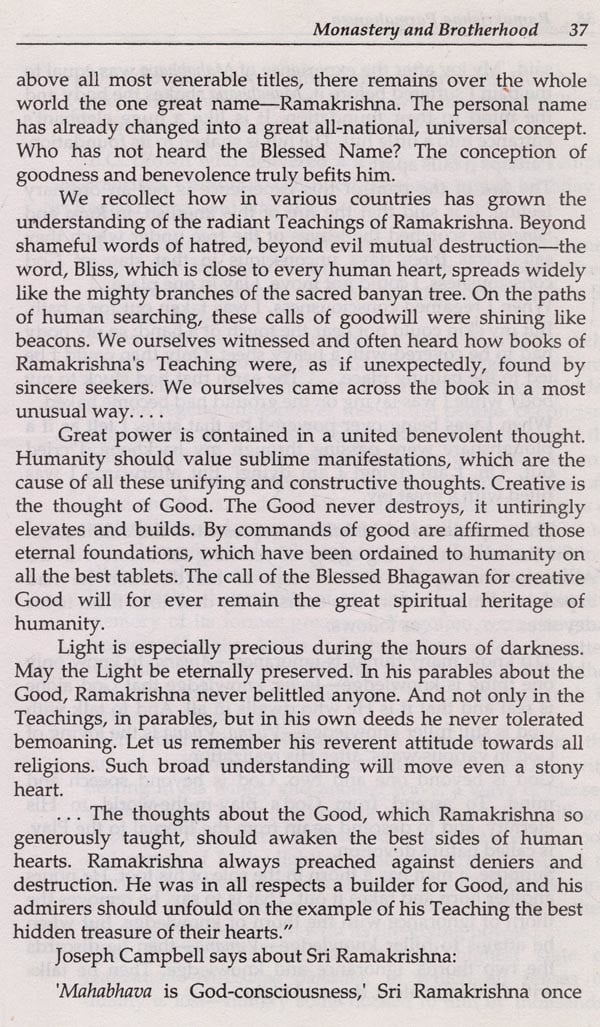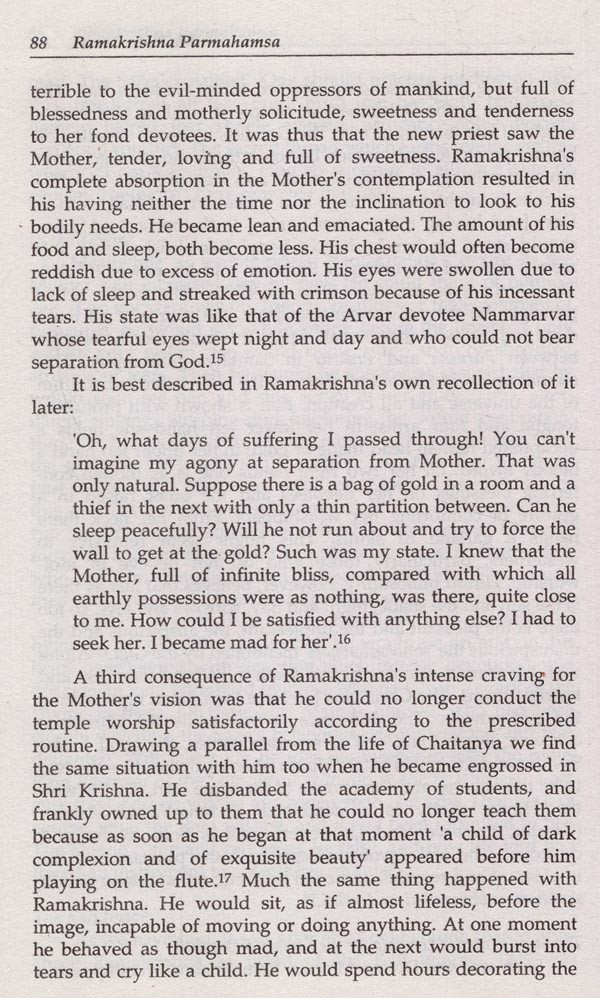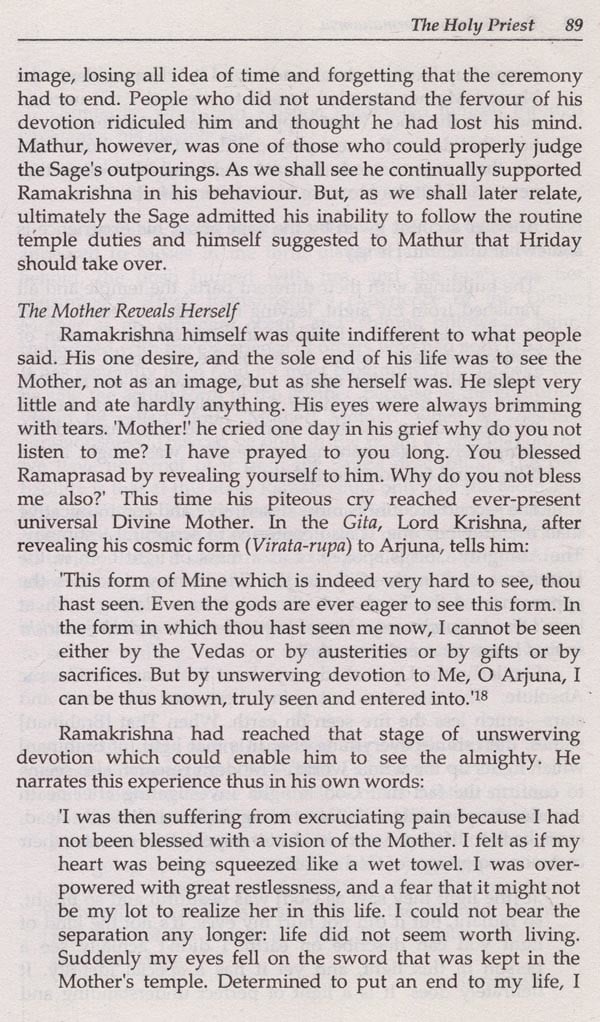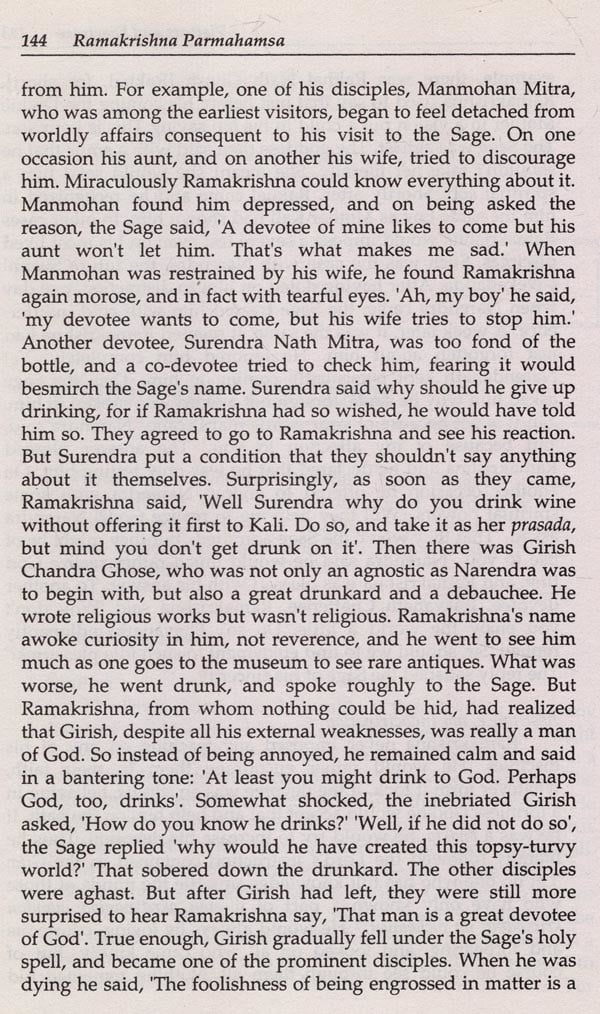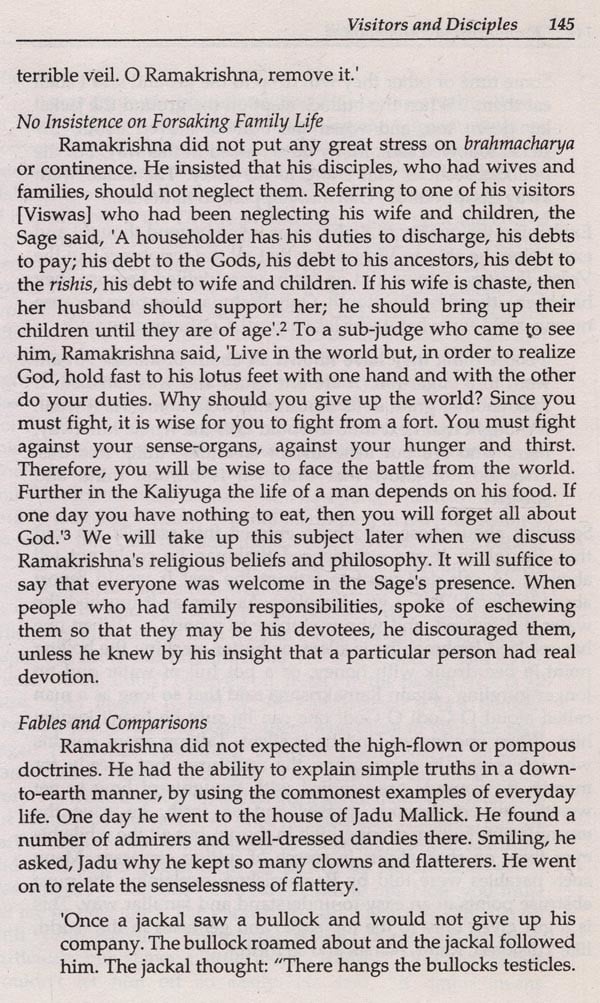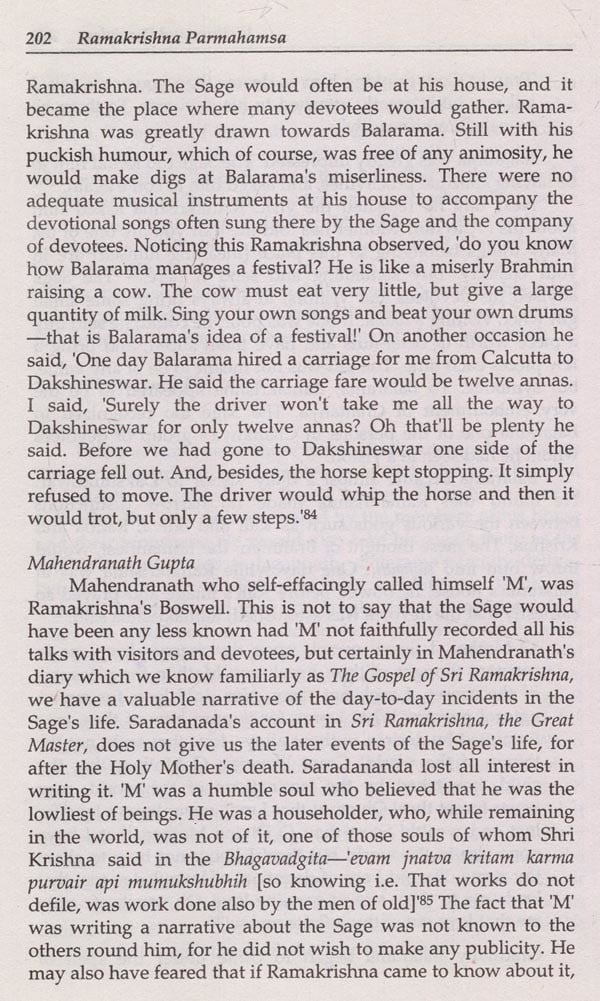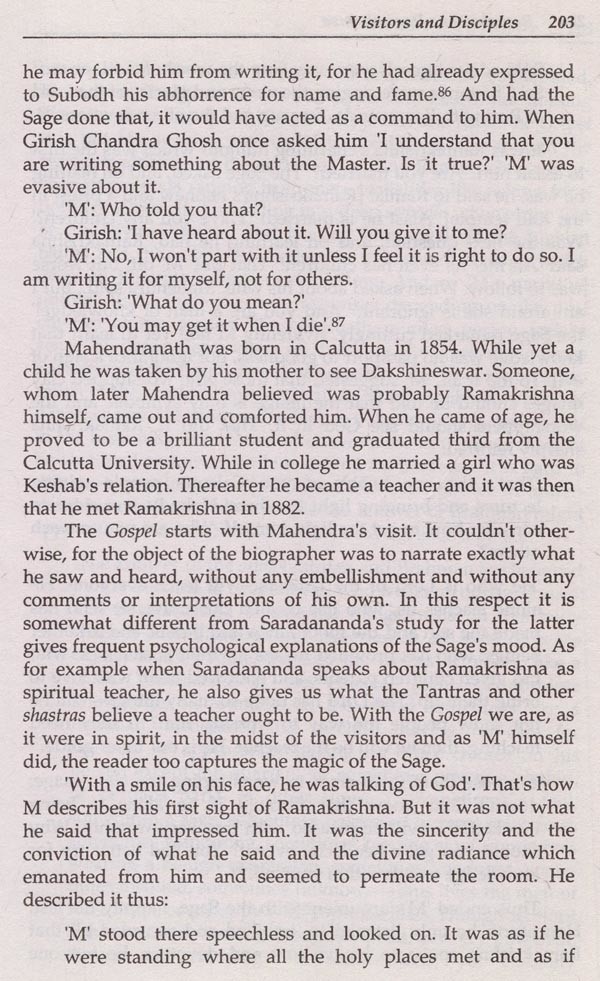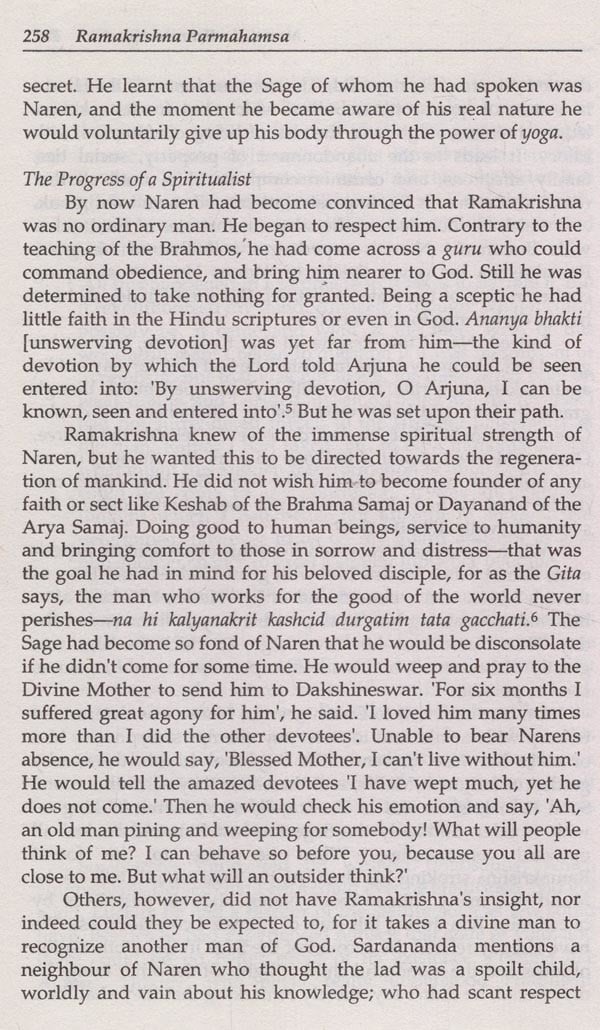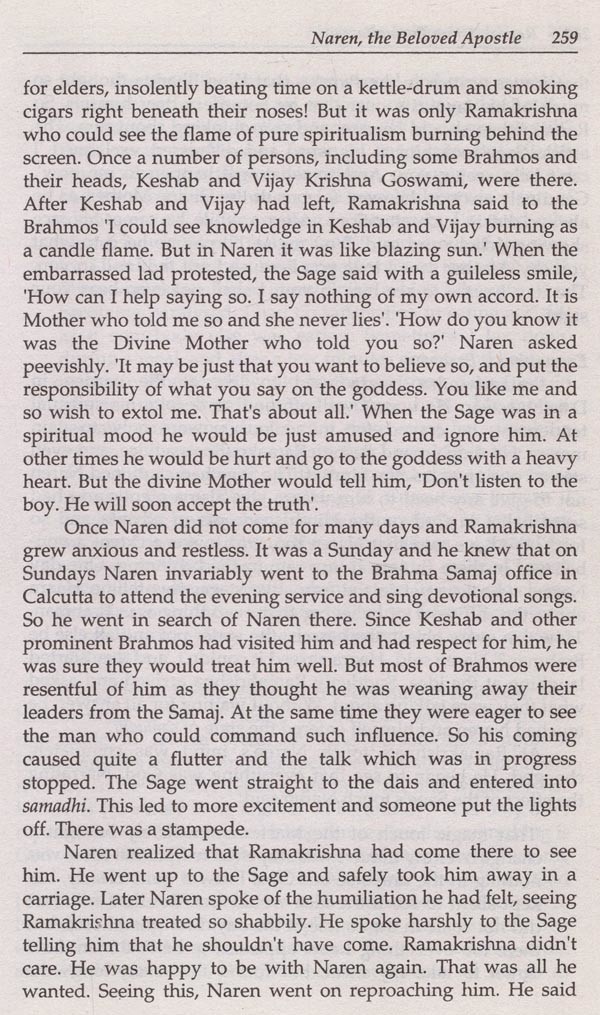
Ramakrishna Parmahamsa- Encyclopaedia of Saints of India (Part-12)
Book Specification
| Item Code: | UBC434 |
| Author: | S. R. Bakshi & Sangh Mittra |
| Publisher: | Criterion Publications, Delhi |
| Language: | English |
| Edition: | 2002 |
| ISBN: | 8179380181 |
| Pages: | 346 |
| Cover: | HARDCOVER |
| Other Details | 9.00 X 6.00 inch |
| Weight | 530 gm |
Book Description
Ramakrishna Parmahamsa's career was unique in the socio-religious history of our sub- continent. His life passed through several experiments having deep bearing on his search for truth and knowledge. At last he succeeded in his mission which showed its worth at national and international level. Devotees-men as well as women thronged to listen to him with highest degree of discipline.
The theme contains fifteen chapters and two appendices which deal with the philosophy and ideology of his life in a comprehensive way. The fount of spiritualism had dep bearing on relations and partings, visitors and disciples, women devotees, pilgrimage and family troubles, the Gandhian ideology and the end of the long journey which was traversed in difficult pursuits.
This work would be useful for teachers, scholars, students and those who are interested in Ramakrishna's ideology and philosophy.
Contents include: The Career; Monastery and Brotherhood; The Western Challenge; The Fount of Spiritualism; The Holy Priest; Pilgrimage and Family Troubles; Relations and Partings; One God through many Eyes; Visitors and Disciples; Women Devotees; Naren, the Beloved Apostle; Was Ramakrishna an Advaitin?; Was Ramakrishna a Visistadvaitin?; Ramakrishna and Gandhi; Journey's End.
Dr. S.R. Bakshi, Ph.D., D.Litt. is an eminent. scholar of Modern Indian History and is the author of several works on Indian nationalism and freedom movement. His recent works include 'Encyclopaedic History of Indian Culture and Religion' (in 5 Vols.), The Great Marathas' (in 5 Vols.), The Great Rajputs' (in 6 Vols.), 'B.R. Ambedkar: His Political and Social Ideology' (in 2 Vols.), 'Encyclopaedic History of The Sikhs and Sikhism' (in 6 Vols.), The Great Moghuls' (in 8 Vols.), and Development of Women, Children and Weaker Sections' (in 5 Vols.). Dr. Bakshi is member of several academic institutions having deep bearing on historical research.
Dr. Sangh Mittra, LL.B. Ph.D. from Lucknow University, is Dy. Director (Research) in Indian Council of Historical Research. Her Ph.D. thesis on 'Iconographic Study of Minor Brahmanical Deities in Northern India' is published along with more than 20 Research Papers in reputed historical journals. She is Life Member of several academic institutions and a reputed examiner of Ph.D. thesis of Universities of North India. Besides she has actively participated in numerous national and international Seminars.
His parental name was Gadadhar Chatterji who was a simple lad in a village not far from Calcutta. He cared little for school, but was fascinated by saintly men around him. When his brother moved to Calcutta as priest in the Kali temple at Dakshineswar, young Gadadhar went along and served as an assistant in its sacred precincts. Eventually, he became priest himself. Unlike the visitors who came to pray mechanically, the young man took his idol very seriously. He was convinced that this was Goddess Kali herself, and he longed to see her in dynamic manifestation.
When all alone, Gadadhar would implore the goddess to appear before him so that he might see her in all her divine splendour. Such appeals and entreaties, having gone waste, he made up his mind to commit suicide. At this, he saw "an ocean of light, limitless, living, conscious blissful." Effulgent light and roaring sounds seemed to rush towards him.
He lost consciousness of the world. He was convinced he had had a vision of the great Kali.
When he was 23, he was married to Sarada. But marriage meant nothing to him, for he was after greater spiritual discoveries.
After varied experiences of the Saivite cult he switched to the Vaishnavite mode, and began the worship of Rama and Krishna, taking on the names of these major manifestations of Vishnu for himself. Thus he came to be known as Ramakrishna. He took his worship very seriously.
The mystic searcher wanted to find out if God confined only to Kali or Rama or Krishna. So with the assistance of a Sufi, he explored Islamic mysticism in the name of Allah and the Holy Kuran.
**Contents and Sample Pages**
